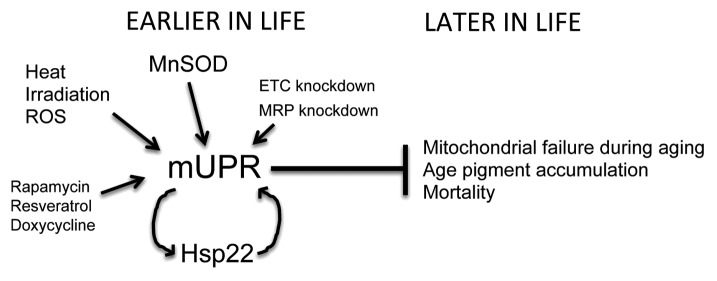
Figure 1. Model for mUPR in aging interventions. Several environmental and genetic interventions that can extend lifespan have in common the activation of the mUPR, preferentially in liver-like cells (the oenocytes of Drosophila, the intestinal tissue of C. elegans, and the hepatocytes of mouse). The mUPR is characterized by the induction of mitochondrial chaperone genes, including Hsp22 in Drosophila (as indicated). The induction of the mUPR in young animals can extend lifespan, and in Drosophila, this has been shown to correlate with reduced accumulation of age pigment.
